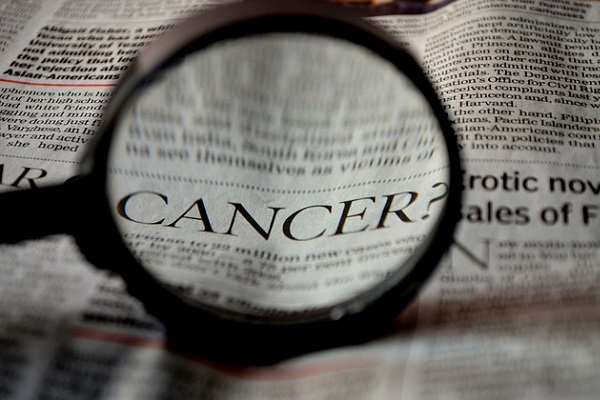It’s agreed that one-third of all deaths from cancer can be prevented, not by way of sophisticated ‘pre-emptive’ methods, but through simple practices — such as balanced diet, reducing weight, if one is corpulent, and keeping active, or doing exercise. Yet another important resolve is giving up smoking. It’s the most important thing one could do to reduce cancer risk. It’s a call one ought to take, even though not all types of cancer are preventable, albeit avoiding the risk factors is more than worth a try to lowering the looming threat of the disease.
While our immune system is geared to respond to any activity that echoes abnormality, in any form, cancer, as clinicians point out, is likely to progress when the immune system is altered, or impaired. Besides, cancer may affect people receiving immunosuppressive drugs, or have certain autoimmune diseases. It can also affect people more in their old age, because the immune system does not function like how it did when one was younger. Also, a normal or optimally functional immune system does not preclude cancer — the disease can pass through our defensive watchtowers and insidiously ‘explode.’
Treatment outcomes are most promising when the frightful disease is diagnosed much before it has proliferated. This is the greatest difficulty. However this may be, for most types of cancer, regular screening tests is more than a useful bet, especially in the early stages. Such tests are available for cancer of the breast, colon, rectum, cervix, prostate, testes, mouth and skin. Screening tests for lung, ovary, among others, are also just as useful. Besides, simple ‘tests’ like self-examination of the breasts and skin are also handy to grasp the cancer ‘ghost’ by its tentacles. The idea of screening tests for people who may be at high risk, which the specialist would be able to assess, need not be overemphasised.
One quick mode to hit upon one’s cancer risk is by way of biomarkers. It may also, in addition, be possible to analyse precancerous tissues [e.g., intestinal polyps, or oral lesions] to pinpoint a cancerous invasion, aside from screening, such as prostate specific antigen [PSA] test, pap smear and mammograms, besides the use of non-invasive and safe infrared technology, or thermography — a tool which can ‘envisage’ suspicious cancer cells up to ten years prior to the development of breast cancer.
Treatment protocols for cancer include medicinal therapy, surgery, radiation, and chemotherapy. These are used either individually, or in combination, with other therapies, depending upon the specific needs of the patient as determined by the specialist. In recent times, treatment plans have also included targeted therapies and biological treatment. These are now being supplemented by experimental therapies and/or employed, or studied, in clinical trials.
There is a school of thought that has now expanded and offers a new approach. It’s called integrative medicine, a concept that advocates the possibility of incorporating into conventional medicine other approaches that may be beneficial to cancer patients. This also includes preventative measures. It’s a form of therapy that integrates the best of both the worlds, including stem cells — for the overall benefit of the patient. It is, however, imperative for patients with or without cancer to first discuss such options with their doctor as some of the medications used in such therapies may not be compatible with conventional drugs and vice versa.
Whatever the cues for diagnosis, we are far from a point where one would be able to ‘pop a pill’ to prevent cancer. Besides, most people are also wary of taking certain drugs, or medications — fearing side-effects. This has led to making chemopreventive and other measures, especially drugs, relatively safe and acceptable to the discerning consumer. According to Michael Sporn, MD, the Oscar M Cohn Professor of Pharmacology and Toxicology at Dartmouth Medical School, US, “People say, ‘How dare we treat healthy people with drugs that subject them to risk?’ But, how dare we not treat someone who we know has a high risk, when we have something to diminish that risk. We can identify people at high risk using genetic and proteomic [cancer] markers, and start to think about intervening earlier.”
Sceptics argue that the idea carries a double-edged sword. On the one hand, it can help prevent cancer and, on the other, it can lead to drug-induced anomalies. For example, most adenomas [benign cancer states] may not progress to cancer, but long-standing use of aspirin, a cancer-pharmaceutical may, for instance, result in life-threatening complications. However, further along the road of chemoprevention has given encouraging results — selective oestrogen receptor modulators [SERMs] in breast cancer, to highlight one example. Tamoxifen, a SERM, given to women with oestrogen receptor-positive disease, has been evidenced to prevent cancer in the unaffected breast — despite mixed clinical opinion. New exciting research is underway with the blind mole rat and its cousin, the naked mole rat, which secrete a substance capable of destroying cancer cells in mammals, including humans. Studies are in progress too with marine animals endowed with ‘built-in’ cancer resistance — to develop the anti-cancer drug, Trabectedin.
This brings us to one important perspective — that for cancer prevention to work we need to aim at multiple levels, keeping in mind the awesome possibilities of one tumour, a group of abnormal cells, developing over a period of time to cancer. This is because it just needs one cell for a tumour [cancer] to grow — this is also something that cannot be whisked away with breezy alacrity. You get the point — it’s more than a formidable task to stop cancer in its path.
The bottom line, as research suggests, needs to be practically advanced, efficacious, tangible and replicable — to slow down and beat cancer in its tracks with newer and more potent, but less harmful, therapies. This is what current research is aiming at and hoping to achieve in the near future.
— First published in The Himalayan Times, Nepal

